What is Wi-Fi 7?
Wi-Fi 7 will be the fastest Wi-Fi generation, with throughput higher than 30 Gbps and very low latency. The use cases that are being targeted for the next generation Wi-Fi devices are the most demanding applications for Augmented Reality (AR), full immersion Virtual Reality (VR), gaming and cloud computing.
With these challenging applications in mind, many new features are being introduced in the IEEE 802.11be standard that will make this “Extremely High Throughput” (EHT) generation of devices a reality. Tri-band operation in the 2.4 GHz, 5 GHz and 6 GHz frequency bands, extra-wide 320 MHz channels, 4096 QAM modulation, up to 16×16 MIMO and multi-link operation (MLO) are pushing the limits of Wi-Fi device’s RF performance and usher in a new era in connectivity.
What are the Benefits of Wi-Fi 7?
Tri-band Operation – More Channels, Less Congestion
Following the footsteps of Wi-Fi 6E, the 802.11be standard defines operation in the 2.4 GHz, 5 GHz, and 6 GHz frequency bands to take advantage of the additional 1200 MHz of spectrum in countries where local regulations allow usage.
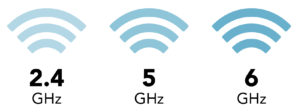
4K QAM – Increased PHY Data Rate by 20%
By increasing the modulation rate to 4096 QAM, 12 bits of data are encoded per OFDM subcarrier. It results in a peak PHY data rate increased by 20% over 1024 QAM.
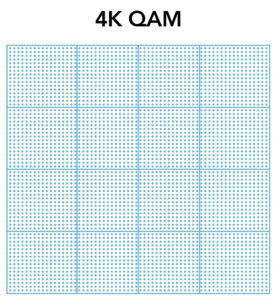
320 MHz Wide Channels – Doubled PHY Data Rate
In the 6 GHz band, the 802.11be standard adds support for extra-wide 320 MHz channels. Doubling the channel width to 320 MHz allows to double the PHY data rate compared to using 160 MHz channels. The 6 GHz band supports up to 6 overlapping 320 MHz channels and 3 non-overlapping channels.
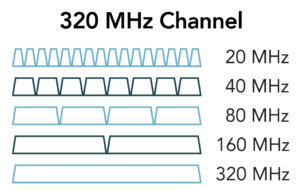
Multi-Link Operation – Increased Throughput, Reliability & Reduced Latency
With a common MAC layer and separate PHY layers, Wi-Fi 7 Access Points and Client Stations are able to transmit and receive simultaneously on multiple links. For example, devices will be able to transmit and receive on both the 5 GHz and 6 GHz bands simultaneously. This feature unlocks greater aggregate throughput and lower latency.
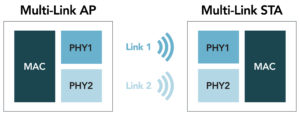
16 Spatial Streams – For up to 16×16 MIMO
The 802.11be standard doubles the number of spatial streams with support for up to 16 streams and double throughput compared to 802.11ax with 8 spatial streams. Because typical client stations support 2 spatial streams, 16×16 MIMO support can improve spectral efficiency with Multi-User (MU) MIMO. 802.11be includes support for both Downlink and Uplink MU-MIMO.
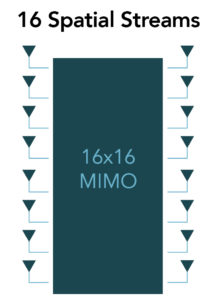
Wi-Fi 7 vs. Wi-Fi 6 and Wi-Fi 5
How do you test Wi-Fi 7 Devices?
Wi-Fi 7 brings a new era of ultra-high throughput. Wi-Fi 7 devices require the highest RF performance.

Performance Validation on 2.4, 5 & 6 GHz Bands:
802.11be includes support for all 3 Wi-Fi frequency bands. While the 6 GHz band is not approved for unlicensed use in all countries, it has seen a growing adoption throughout the world, and it is the only band that includes enough contiguous spectrum to allow for 320 MHz channels. Wi-Fi 7 devices with the highest throughput will operate on all 3 bands.
Wide Signal Bandwidth:
802.11be devices support up to 320 MHz channel bandwidth, twice the signal bandwidth from the previous 802.11ax generation. While this enhancement also doubles the available throughput, it increases the RF performance requirements for transmitter and receiver.
Transmitter Modulation Accuracy:
The 802.11be standard increases the QAM modulation order to 4096 QAM to achieve the highest data rate. With a denser constellation, the transmitter modulation accuracy requirements are also increased. The IEEE standard sets a transmitter target Error Vector Magnitude (EVM) requirement at -38 dB for 4096 QAM, increasing the performance requirement by 3 dB compared to 802.11ax (1024 QAM).
Receiver Sensitivity:
The receiver minimum sensitivity requirements in 802.11be are increased by 3 dB for 320 MHz channel bandwidth compared to 160 MHz channel bandwidth, as the noise floor also increases by 3 dB when doubling the channel width.
Multi-Link Operation:
With MLO, 802.11be Multi-Link Devices (MLD) have the ability to support Simultaneous Transmit Receive operation (STR) by enabling simultaneous uplink and downlink traffic on a pair of links. This feature requires careful characterization of interference between the radio chains, especially when the devices are operating at the minimum frequency separation between the links.
MIMO Performance Validation:
The 802.11be standard increases the maximum numbers of spatial streams to 16, compared to 8 in the 802.11ax standard. While this feature greatly improves the spectral efficiency by doubling the data rate, it also doubles the number of radio chains that have to be characterized and validated.
Why LitePoint?
The fastest Wi-Fi generation requires the best performing test solution and LitePoint has developed the IQxel-MX test platform with industry-leading performance.
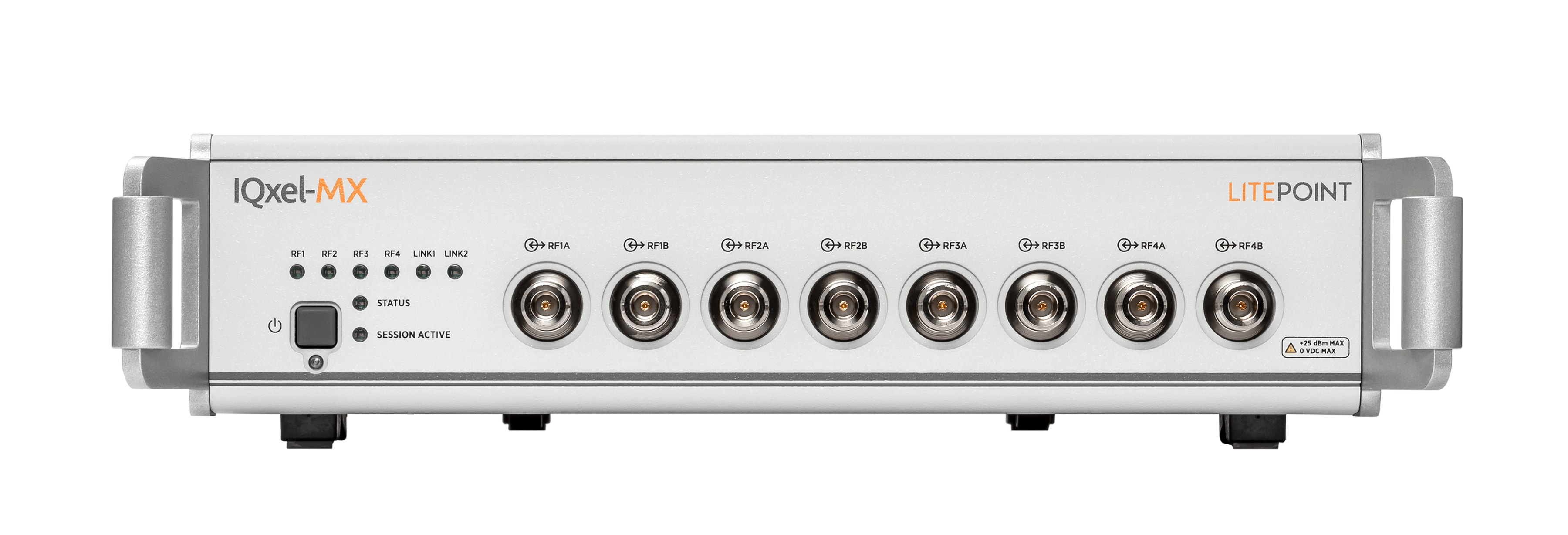

Performance to Guarantee the Highest Wireless Device Accuracy
• Industry-leading EVM ensures highest modulation accuracy
• Superior power accuracy ensures device calibration precision
• Scalable MIMO architecture for up to 16×16 true MIMO testing
• Comprehensive support for legacy Wi-Fi and a wide range of connectivity technologies

Simplicity for Increased Test Efficiency
• Fully-integrated signal generation, signal analysis, and RF front-end enable simple Wi-Fi 6E and Wi-Fi 7 testing in the 2.4, 5 and 6 GHz bands
• Architecture support for multi-link/multi-channel (MLO) and coexistence testing eliminates the need for external components, greatly simplifying test setup
• Flexible and intuitive Graphical User Interface (GUI) enables both on-site and remote development

Economics for R&D, DVT, and Manufacturing Test
• Turnkey test software solutions with IQfact+ enable fast time to market and a seamless transition from product development to manufacturing
• Multi-DUT software architecture reduces manufacturing cost by providing optimized test throughput
• IQxel family software compatibility enables rapid test program migration, reducing development cost


